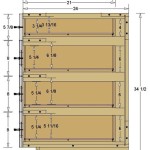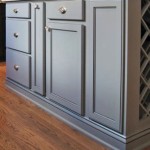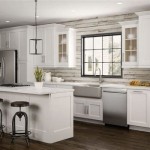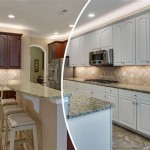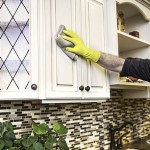Essential Aspects of Refinishing Old Oak Kitchen Cabinets
Old oak kitchen cabinets hold a timeless charm, imbued with character and patina. However, as time passes, they may show signs of wear, discoloration, or outdated styling. Refinishing these cabinets can restore their beauty and revitalize the kitchen's ambiance.
Assessment and Planning
Before embarking on a refinishing project, carefully assess the cabinets' condition. Determine the extent of damage, scratches, or dents. If structural problems exist, repairs may be necessary before refinishing.
Plan the refinishing process meticulously. Choose a suitable finish, such as paint, stain, or glaze, based on the desired aesthetic and durability. Consider the surrounding kitchen decor and lighting to ensure the cabinets complement the overall design.
Cleaning and Preparation
Thoroughly clean the cabinets to remove dirt, grease, and any existing finishes. Use a mild cleaning solution and avoid abrasive materials that could damage the wood. After cleaning, allow the cabinets to dry completely.
Sand the cabinets lightly to remove any blemishes or imperfections. Use fine-grit sandpaper and a sanding block to avoid gouging the wood. Pay special attention to areas with scratches or raised grain.
Refinishing Options
Painting: Painting cabinets is an effective way to transform their appearance and conceal imperfections. Select a paint specifically designed for kitchen cabinets, ensuring durability and resistance to wear and tear.
Staining: Staining enhances the natural grain of the oak while adding a protective layer. Choose a stain that complements the kitchen decor and the existing wood tone. Apply the stain evenly, using a brush or sponge, and allow it to penetrate the wood.
Glazing: Glazing can add depth and dimension to refinished cabinets. Apply a thin layer of glaze over the paint or stain, using a brush or rag. Experiment with different colors and techniques to create a unique finish.
Finishing and Protection
Once the cabinets are refinished, apply a protective topcoat to enhance durability and resistance to wear, heat, and moisture. Choose a polyurethane or lacquer finish based on the desired level of protection and sheen.
Apply the topcoat evenly, using a brush or spray gun. Allow each coat to dry thoroughly before applying the next. Sand lightly between coats to create a smooth and uniform finish.
Maintenance and Care
Regular cleaning and maintenance are crucial to preserve the refinished cabinets. Use a mild cleaning solution and avoid harsh chemicals or abrasive cleaners.
Touch up any scratches or dents promptly to prevent further damage. Apply a fresh coat of topcoat to affected areas to restore the protective layer and maintain the cabinets' beauty and longevity.
Conclusion
Refinishing old oak kitchen cabinets can transform their appearance and revitalize the kitchen's atmosphere. By carefully assessing the cabinets, planning the process, and following the essential steps, homeowners can achieve a professional-looking finish that enhances the beauty and functionality of their kitchen for years to come.

Cabinet Refinishing Guide

Refinishing Kitchen Cabinets Modern Refacing Made Easy Wisewood

Diy Painted Oak Kitchen Cabinets Makeover

Gel Stain Kitchen Cabinets Without Sanding Fast Easy Diy
Refinishing Kitchen Cabinets A Beautiful Mess

From To Great A Tale Of Painting Oak Cabinets

Naperville Kitchen Cabinet Refinishers 630 922 9714 Geneva Refacing Resurfacing

How To Make Rustic Kitchen Cabinets By Refinishing Them The Best Stain Color Amanda Katherine

Staining Your Wood Cabinets Darker Young House Love

Diy Staining Oak Cabinets Eclectic Spark
Related Posts


